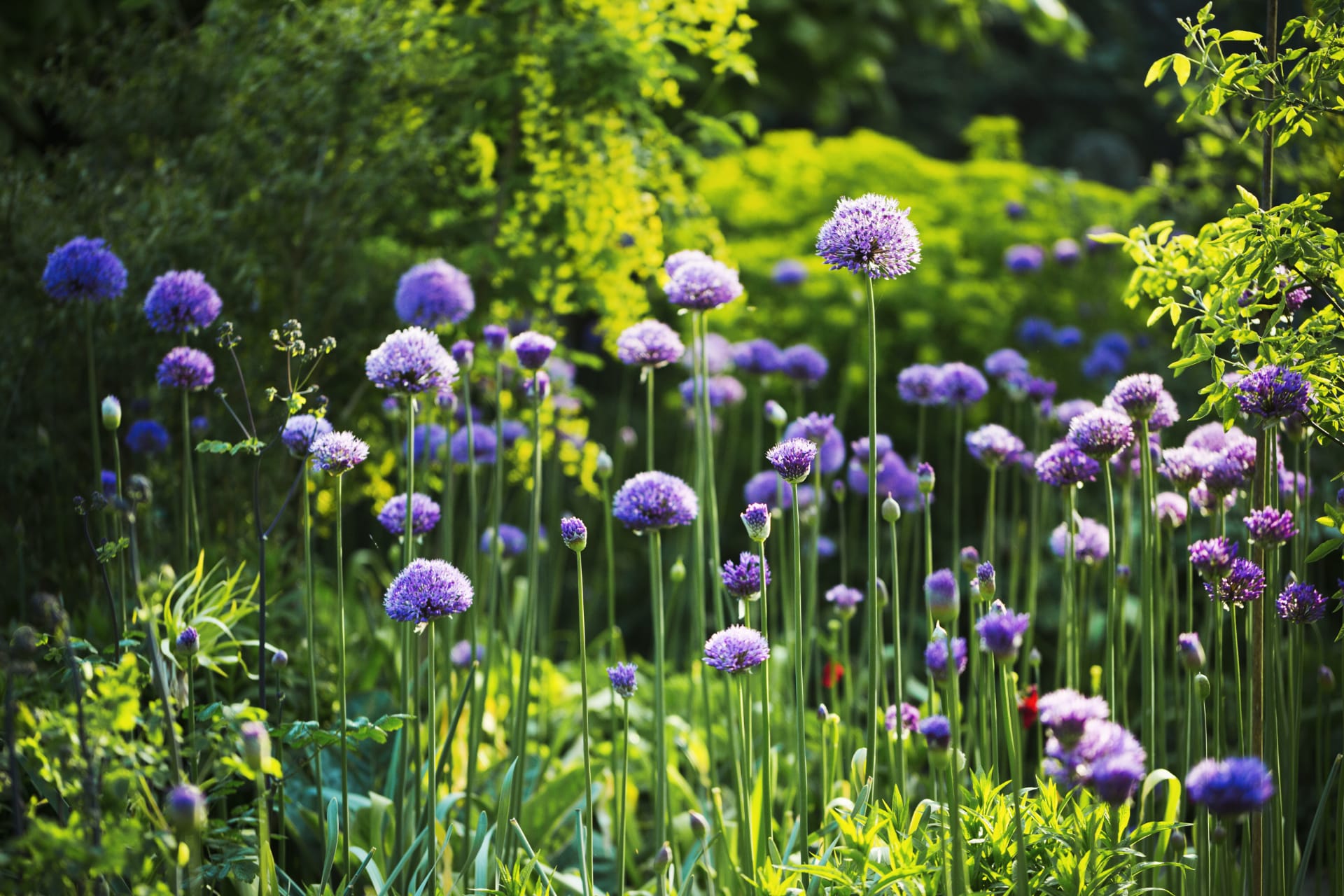Nothing in Basket!
All you need to know about growing alliums, or ornamental onions.
Plant: October and November
Flowers: May and June
Cut back: June and July
I'm new to alliums, but I've been admiring them in gardens for many years. This year I finally took the plunge and have bought two varieties (Allium Sphaerocephalon and Allium Stipitatum Mount Everest). I'm so glad I've added them, as they created a nice focal point of interest in my newest flower bed, which is a bit sparse at the moment.
Alliums are bulbous perennials, they have an incredibly long life, they bloom for weeks, providing flowers between spring and summer. They are loved by bees (I did spot a few bumble bees on mine, and plenty of other pollinators) and provide beautiful pompom shaped flower heads in shades of purple pink and white, and they look fantastic when planted in large groups. Gardeners also enjoy cutting the flowers, both when fresh and when dried to use as an indoor display.
Content:

Alliums require moist but well-drained soil in full sun. They look good amongst low-growing herbaceous plants, who will hide the unsightly foliage the alliums have after they flower. The allium foliage can be left to die down naturally after blooming, leaving the dried flower head in place to give the garden some interest later in the winter. It's a good idea to mulch annually with well-rotted compost or manure.
As with any plant, think about your garden space and the plants you already have or plan to add. Will you be growing your alliums in drifts through your border, planting in bulk, or using pots.
Large tall alliums such as 'purple rain' and 'globemaster' work well planted individually or in drifts. Allium christophii which is shorter suits pots. Allium sphaerocephalon will look perfect in a prairie scheme.
Finally consider colour, most alliums flowers are purple, but some come in blue, white, yellow or pink. Most of my beds are multi-coloured so I don't have to be too fussy about the colour plant I buy, I buy the plant because I like the flower and it's great for pollinators. But this autumn I have prepared one flower bed so it only has pinks, purples and whites in it just to see if I'll like complementary colours in one bed, or if I truly prefer a riot of different colours. But I suspect the squirrels have been planting yellow sunflowers in that bed again which will distract from what I'm trying to achieve.
Alliums do best in a sunny position in very well-drained soil. Check how tall your alliums are going to grow, placing the taller ones towards the back of your border and the shorter ones in front. You can grow alliums in pots but their foliage may not look so good after flowering, which most wildlife gardeners aren't going to worry about, but if you like tidy borders and pots it might not be the right plant for you.
Alliums produce their foliage first before the flowers appear. This often means the foliage is wilting by the time the flowers start to look their best. To hide the foliage you can always plant them in the middle of a border or plant them amongst ornamental grasses and perennials.
They look dramatic when grown in large drifts throughout a border or naturalise them in your lawn the same way you would crocuses, tulips and daffodils.
Plant allium bulbs in autumn to a depth of at least 15cm deep, with the pointy bit facing upwards, the flat rougher part is where the roots will come out, the pointy bit is were the stem of the plant will emerge. It is always better to plant them too deep than too shallow.
If the ground is moist when planting you won't need to water them in. In spring, when you spot the first signs of shoots, apply a balanced fertiliser to poor soils.
Taller varieties may require support in exposed positions. Once the flowers have faded its ok to leave them on the plant as they add some interest to the garden. They will naturally fall apart. Some people enjoy picking the seed heads and drying them to create a decoration for their home.
You can leave your allium bulbs in the ground for a year on year display. Their foliage does die back to beneath ground level, so you may want to put in a marker so you know where they are if you want to avoid digging them up when working in your garden.
After a few years, the allium bulbs will multiply. In late autumn or very early spring carefully dig the bulbs up and gently peel off the offsets to replant straight into the soil.
It takes many years to produce a flowering allium from seed, but if you want to give it a go, collect the ripe seeds from the seed head and sow it straight away.
White rot can be a problem for onions and other alliums. It is a fungal disease and the best way to cure an infection is to clear and burn the affected plant material and avoid planting alliums in the same position for at least five years.
Check the height and spread and colour of an allium - will they fit into your border, size and colour wise
When buying bulbs check there is no sign of mould and plant them within a week of buying.
When buying them already growing in a pot, feel free to gently pull the plant out of the pot to look at the roots to make sure they look healthy and the plant isn't compacted.
Nothing in Basket!
